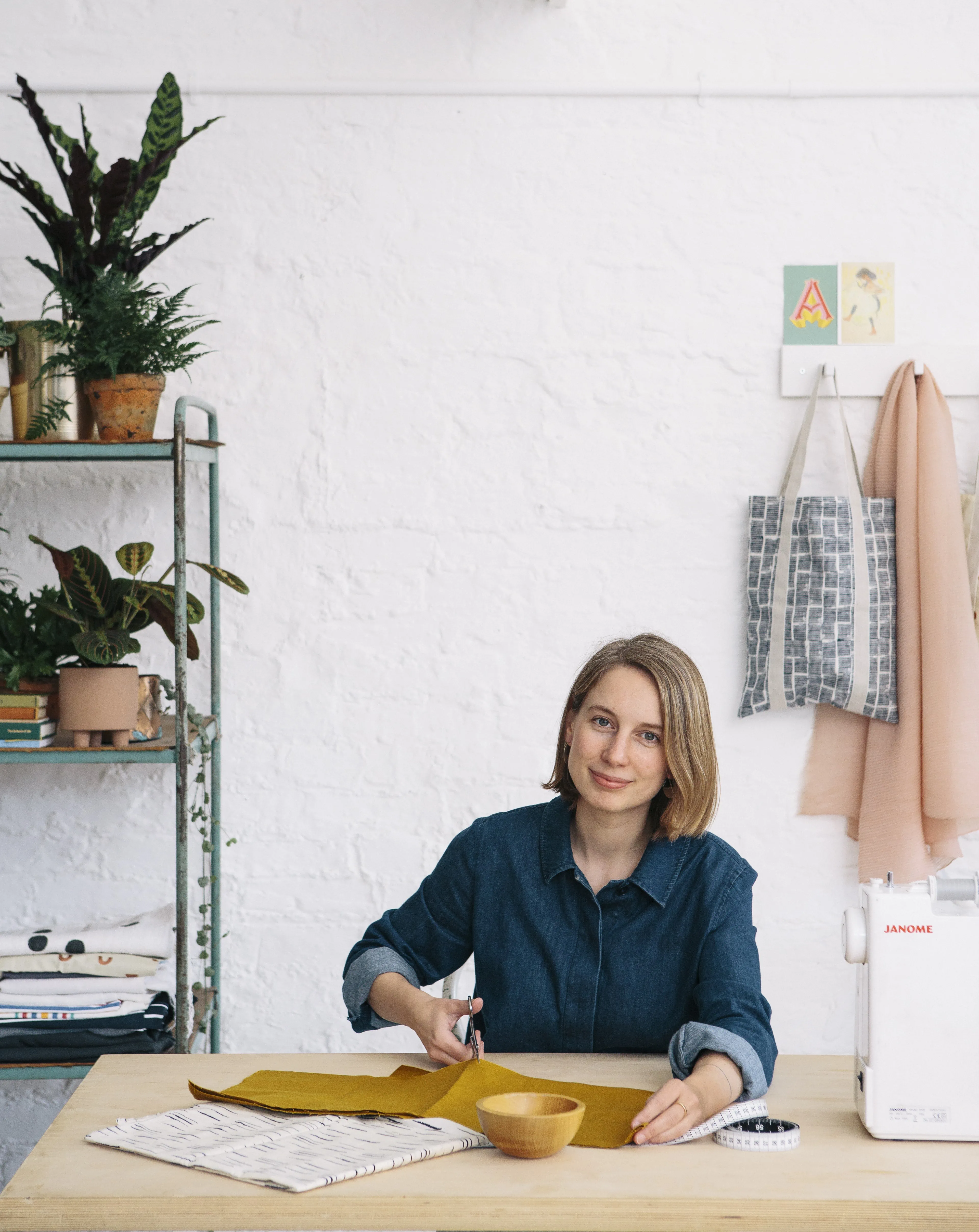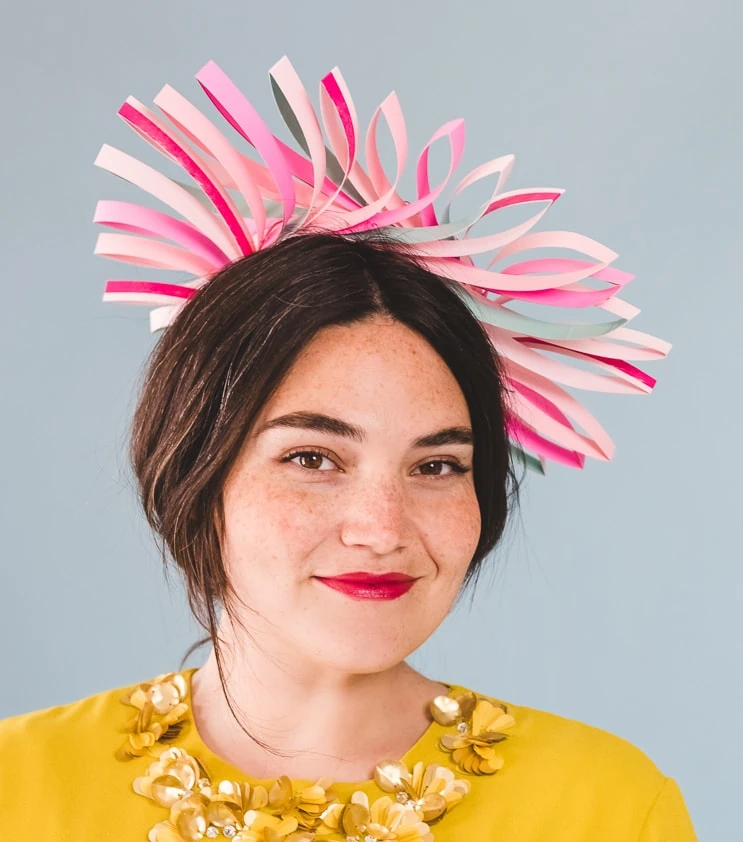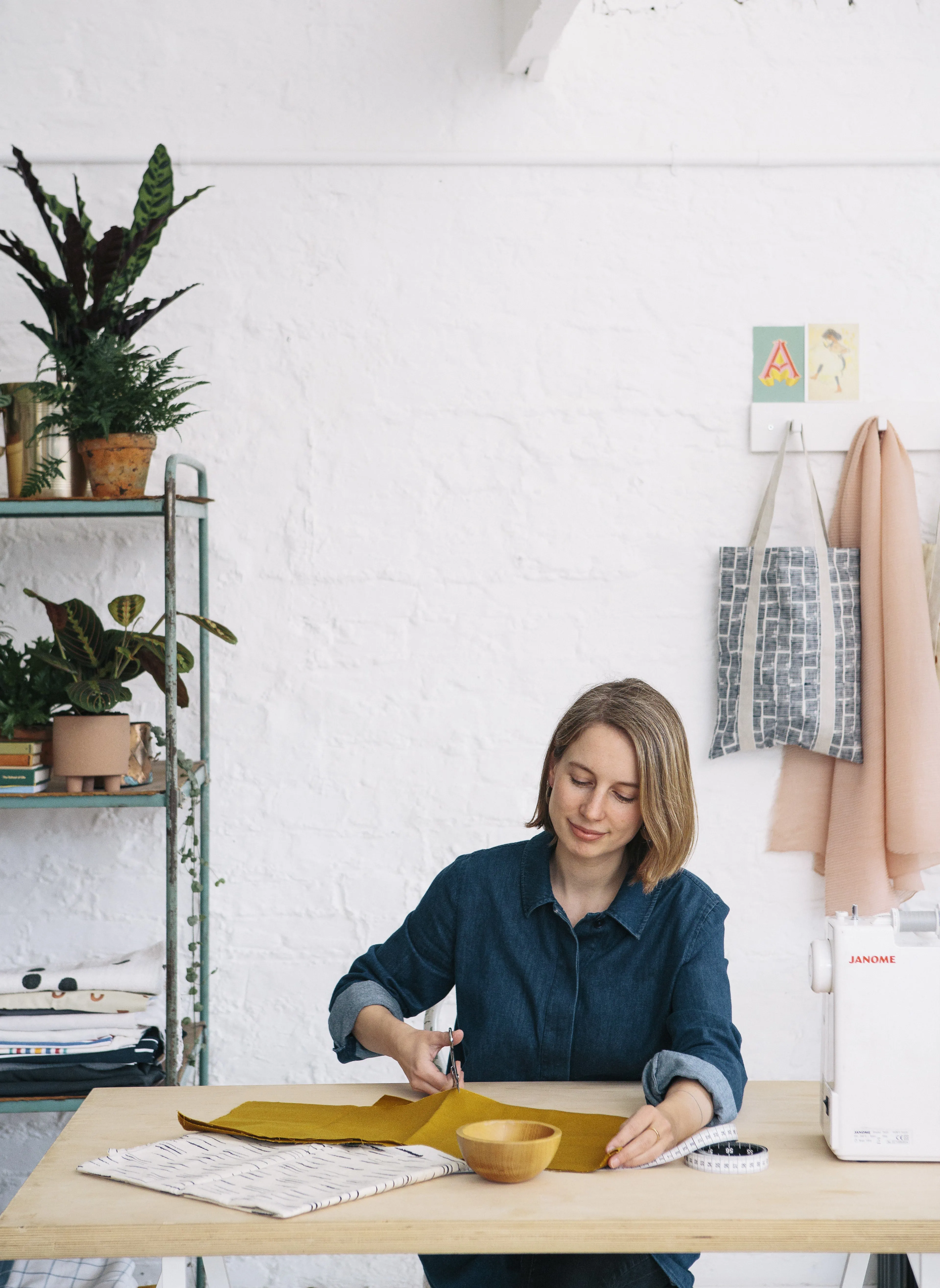 Anna Alicia is the artist behind our most recent pattern feature the DIY Pom Pom Bag. We fell in love with her book, Bags, upon receiving it in the mail. Annas non-traditional road to accessory design began by receiving her degree in Art History at the University of Kent and an MA in Fine Art at Central St Martins. Her degrees play a large role in inspiring her work along with childhood travels and the everyday bustle of working and living in London. From wall hangings to ceramics And designs with a focus on contemporary design & ethical materials. We know you’re going to love her as much as we do! Read on to get to know her more!
Anna Alicia is the artist behind our most recent pattern feature the DIY Pom Pom Bag. We fell in love with her book, Bags, upon receiving it in the mail. Annas non-traditional road to accessory design began by receiving her degree in Art History at the University of Kent and an MA in Fine Art at Central St Martins. Her degrees play a large role in inspiring her work along with childhood travels and the everyday bustle of working and living in London. From wall hangings to ceramics And designs with a focus on contemporary design & ethical materials. We know you’re going to love her as much as we do! Read on to get to know her more!
Artist Interview: Anna Alicia
What did you study? How did going to school specifically for what you do help you?
I studied History and Theory of Art and then an MA in Fine Art. It’s related in a sense to what I do, in being creative and having a sense of the history and theories around art and design, but not directly. As a craftsperson, I’m self-taught, which is both good and bad! The bad side is that I sometimes lack the confidence in my work that I imagine I’d have if I’d studied textiles. The good side is that I tend to aim for simple, accessible solutions to making projects, rather than getting too caught up in the ‘rules’, which I hope makes my book and other projects accessible to even beginner crafters.
How does your background in art history and fine art inspire your collections?
It’s hard to put into words – it’s a bit like traveling, just being exposed to so much art and design gives you a kind of catalog of memories that you might not even realize you’re drawing from!
Where do you find inspiration for your work?
Fabrics are a big inspiration for me when designing projects. I have huge admiration for the wonderful fabric designers out there (fabric labels such as Ruby Star Society and Cloud 9 have gorgeous collections from fabulous designers). After the initial idea, choosing fabric is usually my next step when working on a project.
How have you, as an artist, found your creative voice?
I’m not sure I have! It was a real treat to have complete creative control over all the projects in ‘Bags’. Usually when I make projects for magazines it’s more of a collaboration between what they’re after and my style, which is also fun! But designing the projects for ‘Bags’ and especially seeing them all come together in one book has in a way helped me identify that creative voice. I think its probably always evolving though!
How did you find your medium?
I’ve just always loved sewing, for as long as I can remember. I don’t even remember learning to sew, it just feels like something I’ve always done. I think I’m drawn to the fact that you can make something both beautiful and useful with fabric and you can do it at your kitchen table or on your sofa!
Do you remember the first project you ever made, were you proud of it?
The first sewing project that springs to mind was an embroidered cushion I made with secret pockets, based on an antique cushion I saw on a UK tv show called ‘Antiques Roadshow’ (yeah, I was not the coolest kid!). I was extremely proud of it!
Have you always wanted to be a designer?
Something along those lines, yes!
What’s your goal with your work?
As I mentioned above, it’s really important to me that the how-tos I write are accessible, not only in terms of skills but also cost and confidence. I tried to keep all this in mind when writing ‘Bags’. Part of the reason for choosing bags as the subject for the book is that they are relatively small projects, so you don’t have to spend a fortune on fabric, and I tried to avoid using lots of fancy (expensive) tools. I also included tips on design and fabric choice for each project so that it kind of demystifies the design process a bit and hopefully gives people the confidence to make their own design decisions when they’re ready.
What are you most proud of in your career?
Balancing (kind of!) motherhood and a creative career.
How did your childhood influence what you have become?I was that very quiet little kid who preferred spending hours looking for bugs and examining plants down the end of the garden than playing with other kids, and then I grew into a geek who loved learning and trying to work out how everything is made! So I think the influence is probably obvious! That fascination and attention to detail is there in everything I do, and I love the process of working out how to make a project – what materials will work best, what colours, shapes, how to get the right structure – so basically I’m still a total geek!
Who is your work intended for? Example: you, your readers, someone who you hope is watching…
I hope ‘Bags’ appeals to those who want to get into sewing but are maybe a bit intimidated or not sure where to start. It’s is also aimed at people who want their makes to be contemporary and useful – I wanted all the projects to be bags I’d actually want to use day today! I always encourage readers to put their own stamp on a project when they feel ready, so I hope it also appeals to more experienced makers who will give the projects their own twists.
What do you do when someone copies your work?
I had this happen quite a bit a few years ago when I was selling work online. In one case of a particularly direct copy I started by contacting the person and asking them to stop. They were young and I honestly don’t think they had any concept of intellectual property rights! It was a difficult conversation but eventually, they agreed to take down the works that were direct copies of mine and I hope it taught them to respect other designers in the future.
Do you have any advice for aspiring artists or creative business people?
It’s probably obvious but if you want to make your creative interests into your career then work hard, communicate well and try to hit your deadlines! Also, be flexible. If something isn’t working question it. It’s great to have goals, but you also need to continually assess if things are working for you, if things are still making you happy or if you need to make a change. You might not end up quite where you expected, but that’s ok!
What’s a piece of advice that you’ve carried with you and who is it from?
Be generous (Dr Green on an episode of ER!).
What piece of advice would you give to someone starting out in a creative field?
Value your work and your time.
What’s inspiring you lately?
I’m getting a big kick out of my son’s lego design choices, so that may filter in somewhere!
What’s coming up for you in 2020?
I haven’t really looked that far ahead yet (though it’s not that far!!). I’d love to make another book and I hope I can manage to keep, just about, balancing motherhood and craft writing!
You can find Anna:
Instagram @aalicialondon
Website Of Anna Alicia




Comments